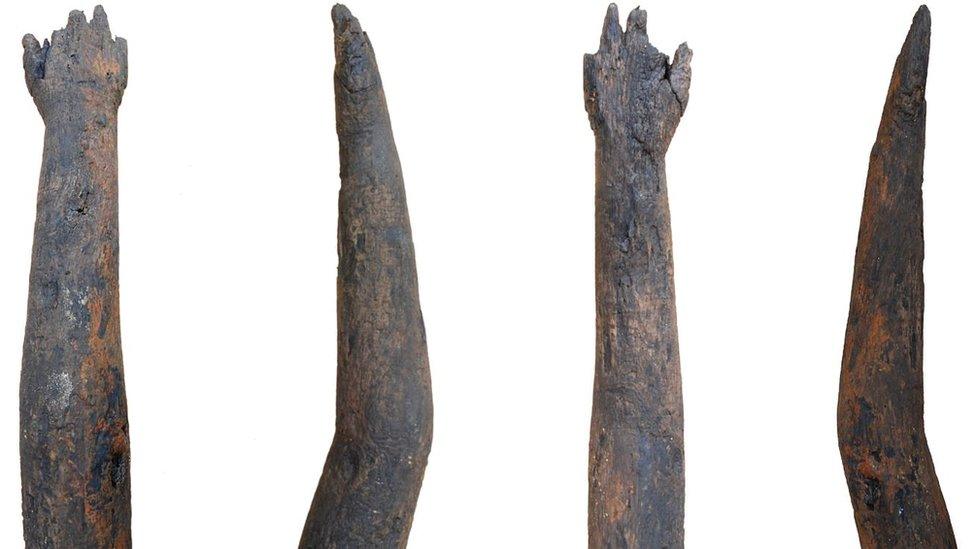'Mystery' pit skeleton found during Bishop's Stortford digs
- Published
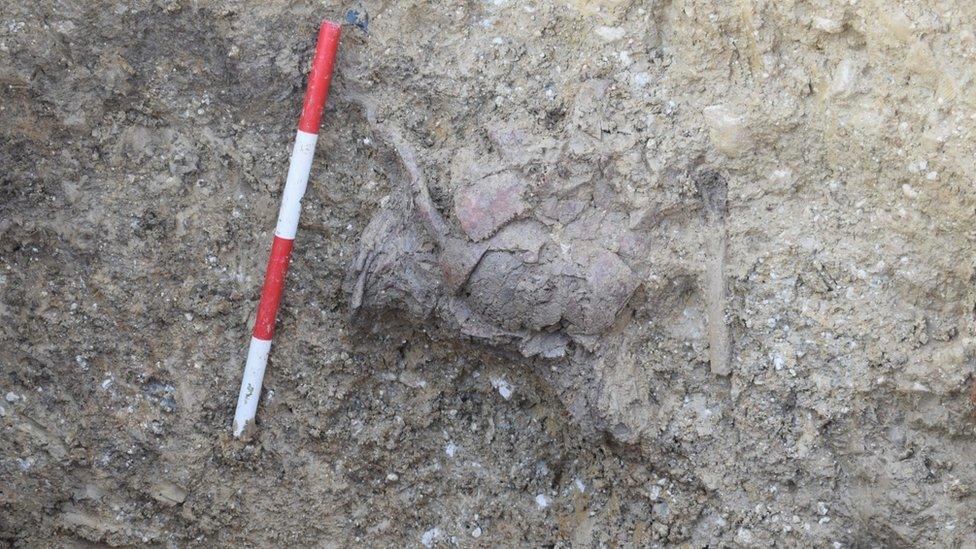
The skull and collarbone of the body had collapsed into the remains of its ribs, while the rest of the body fell into the pit
A skeleton discovered leaning against the sides of a pit with its legs outstretched is "a little mystery", an archaeologist has said.
The find was made during an excavation at Whittington Way, Bishop's Stortford, external in Hertfordshire, along with Bronze Age and Roman burials.
Project manager Louise Moan said the site had evidently been "a sacred place" for centuries.
The skeleton was one of hundreds of finds from two digs in the town.
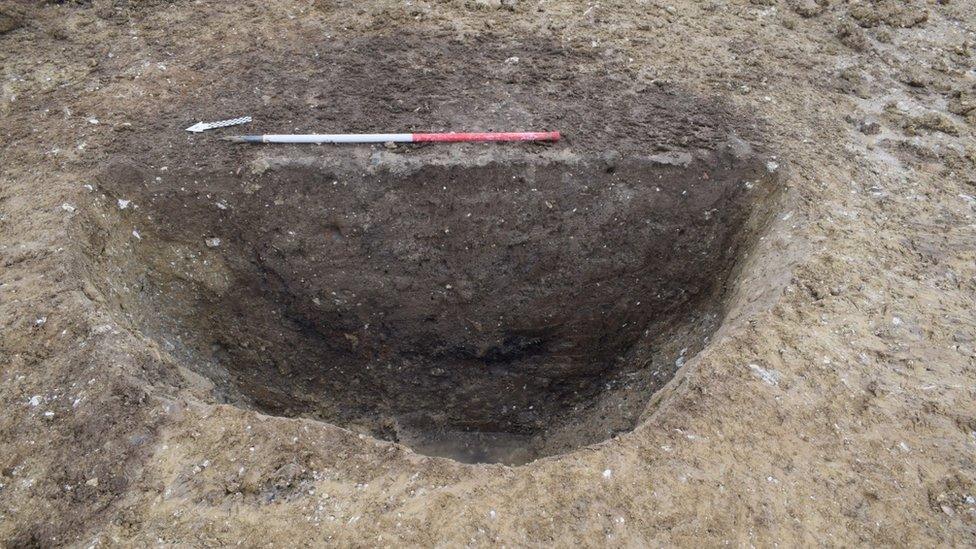
Archaeologists believe the site was seen as sacred from the Bronze Age up to and including the Roman era
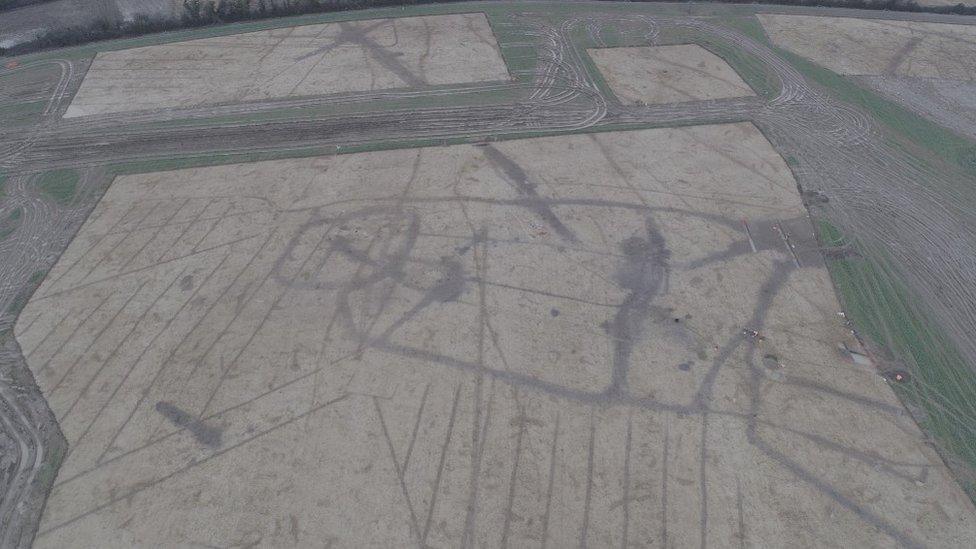
Archaeologists were called in by East Hertfordshire District Council ahead of building a school at Whittington Way
Mrs Moan, who works for Oxford Archaeology East, external, said the skeleton was found "just lying in the bottom" of a 2m by 1.2m deep (6ft 5in x 4ft) pit.
Bronze Age and Roman human remains have also been discovered at the site.
She hopes future analysis will reveal the skeleton's age but it will remain a mystery how it came to be there.
"Could he have fallen in or was he put there and the pit was backfilled, or was he considered for some reason deviant, and they deliberately left him like that?"
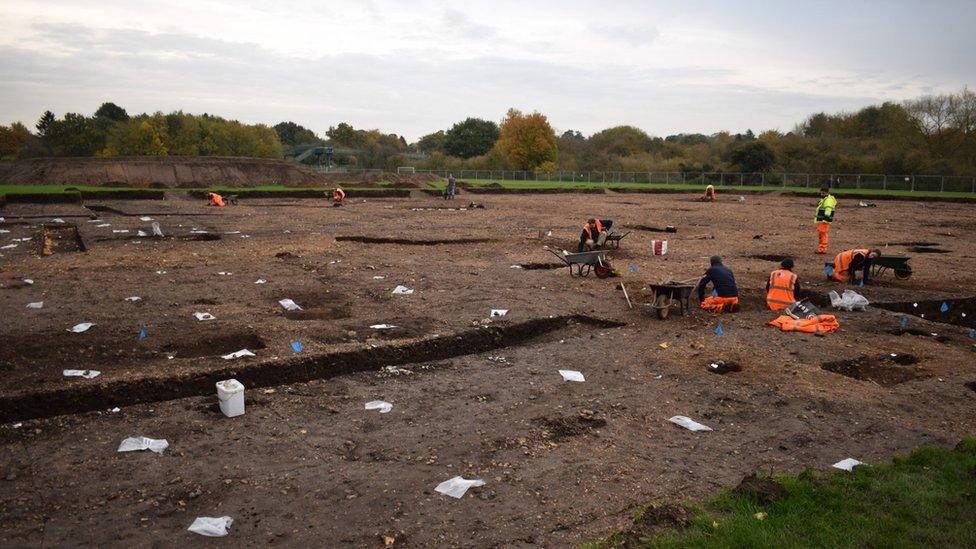
The discovery of nine newborn infant burials points to the Grange Paddocks site being used for domestic as well as industrial purposes, archaeologists said
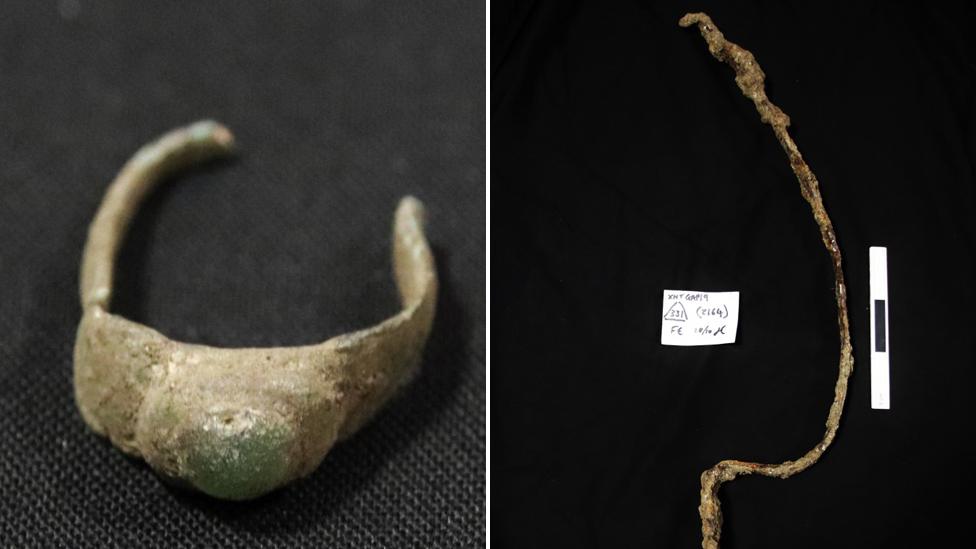
Metalwork finds included rings and fish hooks
A second excavation by Oxford Archaeology East at the Grange Paddocks leisure centre site, external, Rye Street, Bishop's Stortford, revealed a possible supply post for the Roman army at the crossing of the Roman road Stane Street with the River Stort.
Project officer Andrew Greef said nearly 1,000 metal objects, including coins and brooches as well as needles and knives, and nearly 200kg (440lb) of pottery were uncovered, all dating from the First to the Fourth Centuries AD.
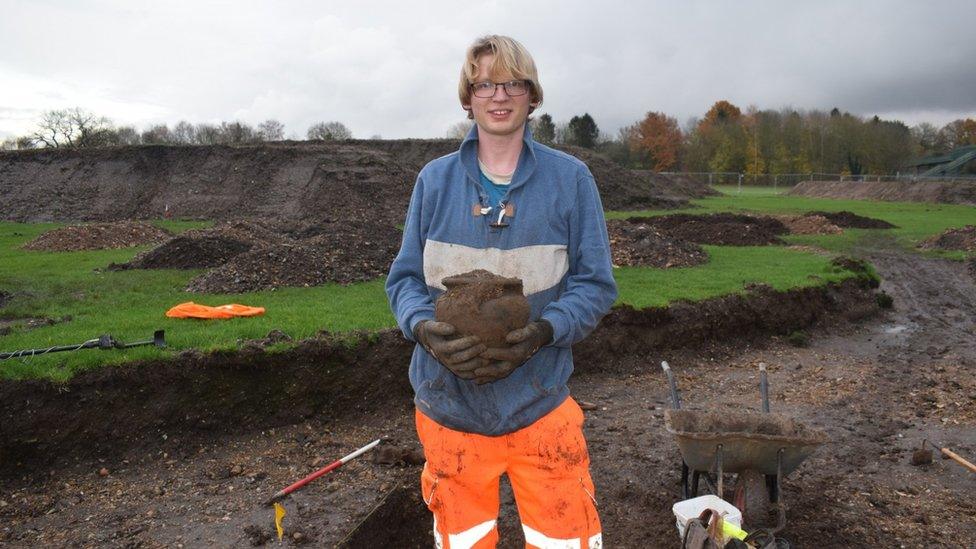
Nearly 200kg (440lb) of pottery was found including amphorae and high-status fine ware
Mr Greef said: "It's the sheer amount of Roman stuff found that is so surprising."
Prior to this, Roman-era finds from the area were "meagre" but he said they found "a huge amount of stuff" which has "put Roman Bishop's Stortford on the map".
The digs took place in 2019 and their finds have only now been revealed.
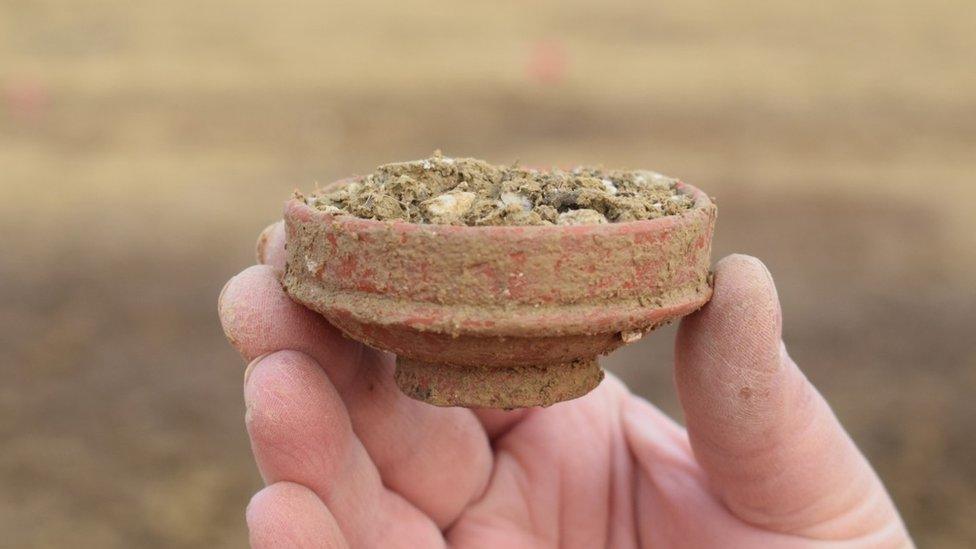
Finds at Whittington Way included this cup made from high quality Roman Samian Ware

Find BBC News: East of England on Facebook, external, Instagram, external and Twitter, external. If you have a story suggestion email eastofenglandnews@bbc.co.uk, external
Related topics
- Published12 November 2020
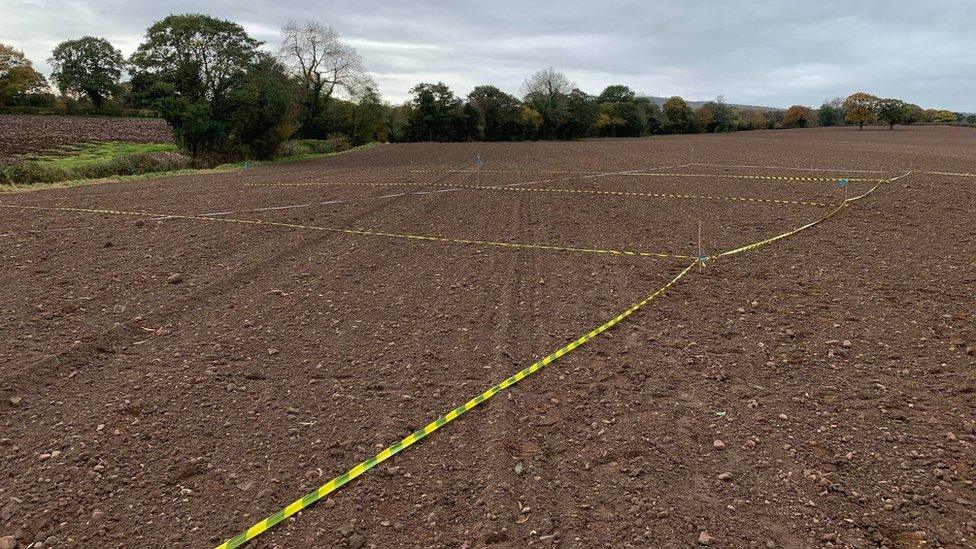
- Published10 August 2020
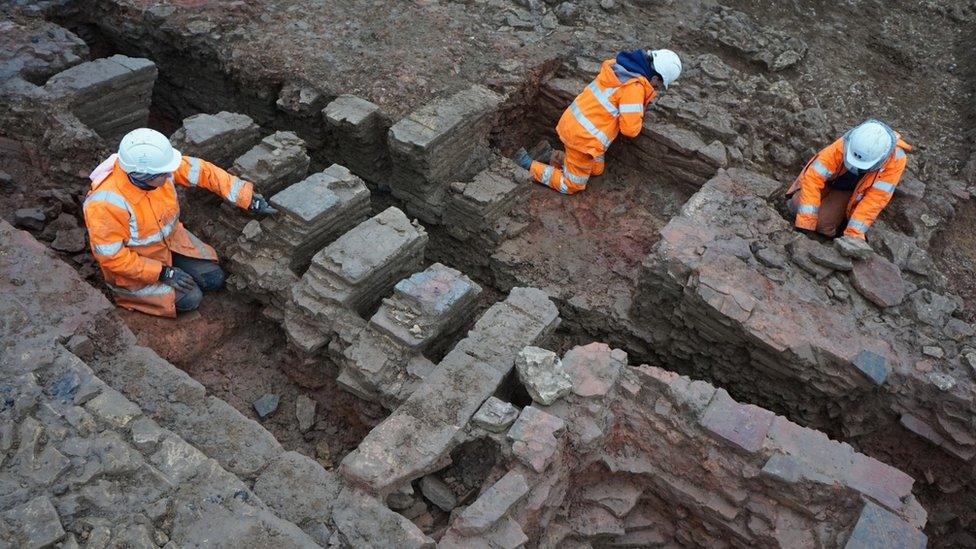
- Published6 December 2019
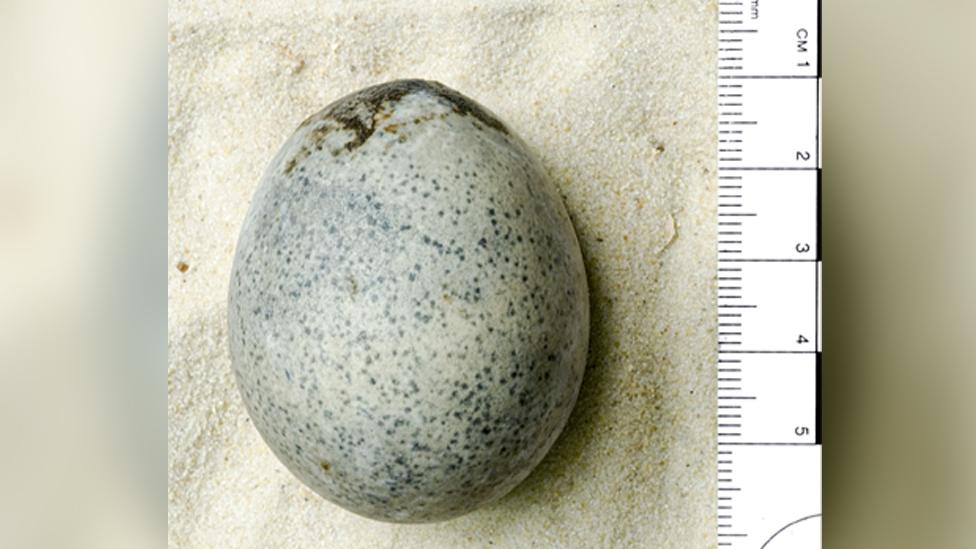
- Published23 July 2019
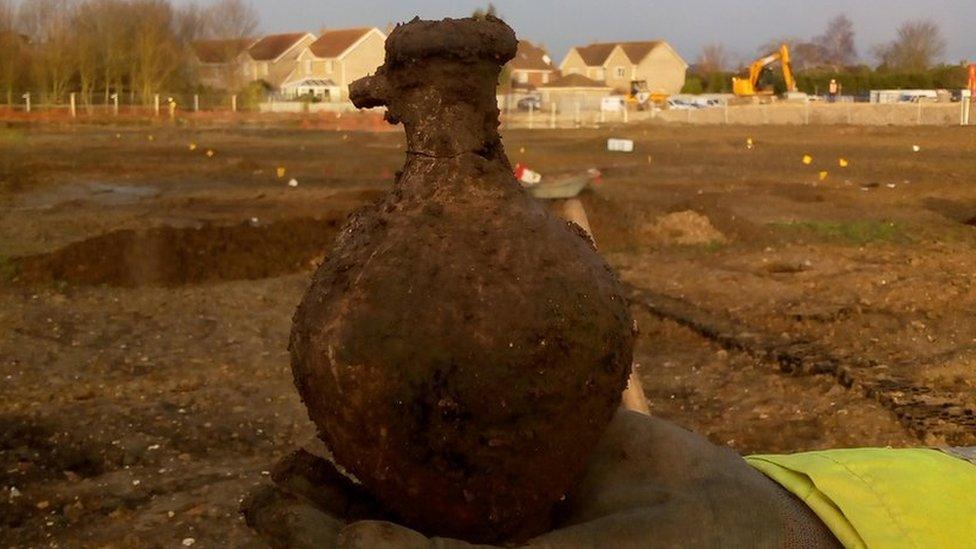
- Published22 June 2019
